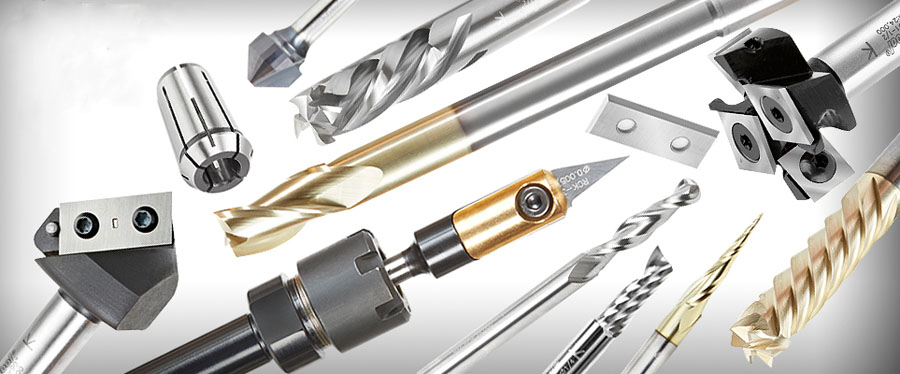What Is Quenched Steel?
Quenched steel refers to the steel with martensitic structure and hardness higher than HRC50 after quenching. It occupies a large proportion in difficult cutting materials. Grinding is a traditional method for machining hardened steel. However, turning, milling, boring, drilling and reaming are often used to improve machining efficiency and solve the problem that the shape and position errors of workpiece after grinding and quenching are too complex to produce.
Characteristics Of Quenched Steel
The cutting characteristics of quenched steel are as follows:
(1) The main cutting characteristics of quenched steel are high hardness, high strength and almost no plasticity.
(2) Large cutting force and high cutting temperature
(3) Quenched steel has high hardness and brittleness. It is not easy to produce chip during cutting, and low surface roughness can be obtained on the machined surface.
(4) The cutting edge is easy to break and wear
(5) Low thermal conductivity
How To Select Tool Material For Machining Hardened Steel?
It is an important condition to select cutting tool materials reasonably for machining quenched steel. According to the cutting characteristics of quenched steel, tool materials should not only have high hardness, wear resistance and heat resistance, but also have certain strength and thermal conductivity.
(1) Cemented carbide: in order to improve the performance of cemented carbide, cemented carbide containing an appropriate amount of TAC or NBC ultra-fine particles shall be preferred when selecting cemented carbide. Adding TAC and NBC particles into WC Co cemented carbide can refine the grain size of cemented carbide and improve the wear resistance of cemented carbide. TAC can also reduce the friction coefficient of cemented carbide, reduce the cutting temperature, and enhance the hot cracking and thermoplastic deformation resistance of cemented carbide. At the same time, compared with ordinary cemented carbide, WC grain can be refined to 0.5-1 μ m. The hardness increased by hra1.5-2, the bending strength increased by 600-800mpa, and the high temperature hardness increased.
Cemented carbide grades commonly used for cutting quenched steel are: ym051, ym052, yn05, yn10, etc.
(2) Ceramic cutting tools: adding tic and other metal elements into alumina, adopting hot pressing process, improves the compactness of ceramics, improves the performance of alumina based ceramics, increases the hardness of ceramics to hra95.5, the bending strength can reach 800-1200mpa, and the heat resistance can reach 1200 ℃ -1300 ℃. Adhesion and diffusion wear can be reduced in use. Ceramic cutters are suitable for turning, milling, boring and planing hardened steel.
(3) Cubic boron nitride tool: the hardness is hv8000-9000, the composite bending strength is 900-1300mpa, the thermal conductivity is high, and the heat resistance is 1400 ℃ -1500 ℃, which is the highest among the tool materials. It is very suitable for fine turning and semi fine turning of quenched steel.
To sum up, the best tool material for cutting quenched steel is cubic boron nitride blade, followed by ceramic tools, and finally new brand cemented carbide tools.
How To Select The Cutting Parameters When Machining Quenched Steel?
The cutting parameters of quenched steel are mainly selected according to the physical and mechanical properties of tool materials and workpiece materials, workpiece shape, process system stiffness and machining allowance. When selecting the three elements of cutting parameters, the first thing to consider is to select a reasonable cutting speed, the second is the cutting depth, and the second is the feed speed.
(1) Cutting speed VC: according to previous experience, the cutting speed for cutting hardened steel with different tool materials is:
Carbide cutter vc=30~75m/min; Ceramic tool vc=60~120m/min; Cubic boron nitride cutter vc=80~250m/min. When cutting intermittently and the hardness of workpiece material is too high, the cutting speed should be reduced, which is generally more than 1/2 of the minimum cutting speed.
(2) Cutting depth AP: generally selected according to machining allowance and process system stiffness. Generally, ap=0.1~3mm.
(3) Feed speed fr: generally 0.05-0.5mm/r. When the workpiece material has high hardness or is cut intermittently, in order to reduce the unit cutting force, the feed speed should be reduced to prevent the blade from collapsing.
How To Use CBN Tool To Cut Hardened Steel?
CBN cutters are mainly used to cut various quenched steels and other difficult cutting materials. It not only has high metal removal rate, but also has good surface treatment quality. Cutting various quenched steels can effectively replace grinding, reduce processing procedures and improve productivity. Because CBN tools have high hardness (hv8000~9000) and high heat resistance (1400 ℃ ~1500 ℃), it is allowed to cut hardened steel at a cutting speed several times higher than that of cemented carbide, and its durability is several times to dozens of times that of cemented carbide. CBN tools are not suitable for low speed cutting. The CBN tool softens the workpiece material in a small cutting area through the heat generated in the cutting process.
When cutting materials with hardness of hrc55-65, the cutting speed of CBN tool shall be within the range of 90-200m/min. During milling, vc=100-160m/min, and the feed rate per minute vf=70-160mm/min; During reaming, vc=60-130m/min, ap=0.1-0.2mm, f=0.07-0.2mm/r. CBN cutters are mainly used for semi finishing and finishing of quenched steel, and their efficiency is about 10 times higher than that of grinding.
Example Of CBN Tool Cutting Quenched Steel
The cutting of quenched steel is one of the most representative hard cutting materials. In the past, people thought it was hard and could only be ground. Now, due to the progress of cutting technology, people are used to turning, milling, planing and drilling instead of grinding.
The hardened bearing steel (GCr15) was turned with cubic boron nitride cutter kbn100, and the workpiece hardness was HRC62. The workpiece is the outer ring of the bearing. The cutting parameters are VC = 115m/min, AP = 0.3mm, f = 0.1 ~ 0.2mm/r, tool durability for 60min, and surface roughness Ra1.6.
Summary
According to current experience, cubic boron nitride CBN tool is the most suitable tool for machining quenched steel when the machine tool and environment allow.



